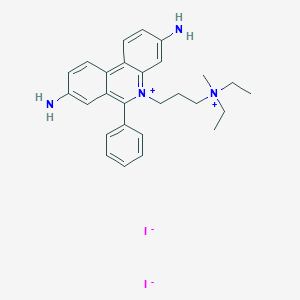
-
PI
NMR and HPLC COA下载 MSDS下载 - Names:
PI,死细胞染料
- CAS号:
25535-16-4
MDL Number: MFCD00011921 - MF(分子式): C27H34I2N4 MW(分子量): 668.39
- EINECS:247-081-0 Reaxys Number:
- Pubchem ID:24898510 Brand:BIOFOUNT
| 货品编码 | 规格 | 纯度 | 价格 (¥) | 现价(¥) | 特价(¥) | 库存描述 | 数量 | 总计 (¥) |
|---|---|---|---|---|---|---|---|---|
| YZM018808-1g | 1g | >98.0% | ¥ 0.00 | ¥ 0.00 | 2-3days | ¥ 0.00 | ||
| YZM018808-10ug/ml | 10ug/ml | >98.0% | ¥ 100.00 | ¥ 100.00 | 2-3days | ¥ 0.00 | ||
| YZM018808-100mg | 100mg | >98.0% | ¥ 865.00 | ¥ 865.00 | 2-3days | ¥ 0.00 | ||
| YZM018808-10mg | 10mg | >98.0% | ¥ 220.00 | ¥ 220.00 | 2-3days | ¥ 0.00 | ||
| YZM018808-5mg | 5mg | >98.0% | ¥ 150.00 | ¥ 150.00 | 2-3days | ¥ 0.00 |
| 中文别名 | 25535-16-4;碘化丙啶;;PI染色液;碘化丙啶PI;碘化丙锭;死细胞核染料 |
| 英文别名 | Propidium iodide;PI;Propidium Diiodide;Propidium Iodine;Propidium (Iodide);Cellstain- PI |
| CAS号 | 25535-16-4 |
| SMILES | CC[N+](C)(CC)CCC[n+]1c2cc(ccc2c3ccc(cc3c1c4ccccc4)N)N.[I-].[I-] |
| Inchi | InChI=1S/C27H33N4.2HI/c1-4-31(3,5-2)17-9-16-30-26-19-22(29)13-15-24(26)23-14-12-21(28)18-25(23)27(30)20-10-7-6-8-11-20;;/h6-8,10-15,18-19,29H,4-5,9,16-17,28H2,1-3H3;2*1H/q+1;;/p-1 |
| InchiKey | XJMOSONTPMZWPB-UHFFFAOYSA-M |
| 分子式 Formula | C27H34I2N4 |
| 分子量 Molecular Weight | 668.39 |
| 闪点 FP | No data available |
| 熔点 Melting point | 220-225°C |
| 沸点 Boiling point | No data available |
| Polarizability极化度 | No data available |
| 密度 Density | No data available |
| 蒸汽压 Vapor Pressure | No data available |
| 溶解度Solubility | H2O : 5 mg/mL (7.48 mM; ultrasonic and warming and heat to 60°C) |
| 性状 | 粉红色到红色固体粉末 |
| 储藏条件 Storage conditions | 储存温度2-8°C ,充氩保存;容易吸潮,对光较敏感 |
碘化丙啶(PI)(25535-16-4,Propidium iodide)的毒理属性:
| 生物 | 测试类型 | 路线 | 报告剂量(标准化剂量) | 影响 | 参考 |
|---|---|---|---|---|---|
| mouse | LD50 | subcutaneous | 16 mg/kg (16 mg/kg) | British Journal of Pharmacology and Chemotherapy., 11(334), 1956 [PMID:13364212] |
碘化丙啶(PI)(25535-16-4,Propidium iodide)的应用:
碘化丙啶是一种膜不可渗透的DNA嵌入剂。在488 nm处有红色荧光。可用于流式细胞仪染色凋亡细胞和细胞核。可用于区分凋亡和坏死细胞死亡,而仅染色坏死细胞。可与标记有异硫氰酸荧光素的常见绿色荧光探针一起使用。
碘化丙啶(PI)实验操作步骤:
1. 细胞按照实验方案进行凋亡诱导,300 g离心5 min,弃上清,收集细胞,PBS洗涤一次后,轻轻重悬细胞并计数。
备注:碘化丙啶(PI)品仅在悬浮培养的细胞中验证,良好的细胞状态是实验的关键。贴壁生长的细胞用于凋亡检测时,可能会因为胰酶消化、吹打等处理导致细胞的坏死或凋亡,对实验结果可能存在不可控的影响,请谨慎处理。
2. 取1~5 × 105重悬的细胞,300 g离心5 min,弃上清。用PBS洗涤细胞一次,离心后弃上清,加入500 μL稀释的1 × Annexin V Binding Buffer工作液重悬细胞。
3. 细胞悬液中加入5 μL的Annexin V- 荧光染色液和5 μL的碘化丙啶(PI)染色液。
4. 轻柔涡旋混匀后,室温避光孵育15~20 min。
5. 反应完成后立即上机检测。如不能及时检测,请于冰上避光静置并于1小时内完成检测。
碘化丙啶保存溶液配制:
| 1mg | 5mg | 10mg | |
| 1 mM | 1.496 ml | 7.481 ml | 14.961 ml |
| 5 mM | 0.299 ml | 1.496 ml | 2.992 ml |
| 10 mM | 0.15 ml | 0.748 ml | 1.496 ml |
| 50 mM | 0.03 ml | 0.15 ml | 0.299 ml |
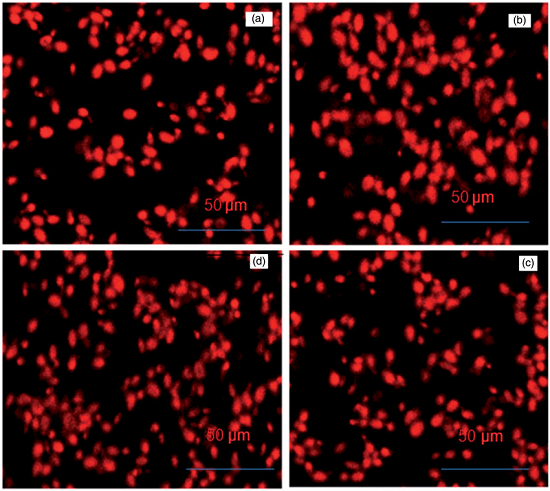
Propidium iodide staining (Confocal microcscopy) showing apoptosis effect of seed extract and H 2 O 2 on yeast cell population (a) Control (b) extract (c) H 2 O 2 (d) H 2 O 2 þ extract.
碘化丙啶(PI)(25535-16-4,Propidium iodide)实验注意事项:
1.实验前需戴好防护眼镜,穿戴防护服和口罩,佩戴手套,避免与皮肤接触。
2.实验过程中如遇到有毒或者刺激性物质及有害物质产生,必要时实验操作需要手套箱内完成以免对实验人员造成伤害。
3.取样品的移液枪头需及时更换,必要时为避免交叉污染尽可能选择滤芯吸头。
4.称量药品时选用称量纸,并无风处取药和称量以免扬撒,试剂的容器使用前务必确保干净,并消毒。
5.取药品时尽量采用多个药勺分别使用,使用后清洗干净后,烘干消毒存放。
6.实验后产生的废弃物需分类存储,并交于专业生物废气物处理公司处理,以免造成环境污染。
Propidium iodide(25535-16-4) Experimental considerations:
1. Wear protective glasses, protective clothing and masks, gloves, and avoid contact with the skin during the experiment.
2. The waste generated after the experiment needs to be stored separately, and handed over to a professional biological waste gas treatment company to avoid environmental pollution.
Tag:碘化丙啶(25535-16-4,Propidium iodide),碘化丙啶试剂,碘化丙啶的作用,碘化丙啶的价格,碘化丙啶的厂家,碘化丙啶的外观,碘化丙啶的溶解度,碘化丙啶的纯度,碘化丙啶的产量,碘化丙啶MSDS,碘化丙啶的生产,碘化丙啶的合成路线
| 产品说明 | 碘化丙啶(25535-16-4,PI)用于细胞染色的红色荧光染料,碘化丙啶仅用于科学研究实验使用,碘化丙啶MSDS,碘化丙啶毒性,碘化丙啶溶解度, 碘化丙啶染dna的原理等见主页。 |
| Introduction | Propidium iodide(25535-16-4,碘化丙啶) used for scientific research and chemical synthesis intermediates |
| Application1 | Propidium iodide used as fluorescent stain for nucleic acids,and used in flow cytometry to evaluate cell viability |
| Application2 | 碘化丙啶(25535-16-4,Propidium iodide)是可用于细胞染色的红色荧光染料。 |
| Application3 | 碘化丙啶(25535-16-4,Propidium iodide)会与胆碱酯酶形成荧光复合物,从而抑制其生成。 |
Propidium iodide (PI) is a membrane-impermeant, red fluorescent dye that stains DNA. It is generally excluded from viable cells and can penetrate damaged cells, therefore it is commonly used to identify the viability of cells. PI is suitable for fluorescence microscopy and flow cytometry.
| 警示图 | |
| 危险性 | warning |
| 危险性警示 | No data available |
| 安全声明 | H315,H319,H335 |
| 安全防护 | P261,P305+P351+P338 |
| 备注 | 实验过程中防止吸入、食入,做好安全防护 |
| 象形图 |   |
|---|---|
| 信号 | Warning |
| GHS危险说明 |
H315 (100%): Causes skin irritation [Warning Skin corrosion/irritation] H319 (100%): Causes serious eye irritation [Warning Serious eye damage/eye irritation] H335 (100%): May cause respiratory irritation [Warning Specific target organ toxicity, single exposure; Respiratory tract irritation] H341 (24.84%): Suspected of causing genetic defects [Warning Germ cell mutagenicity] Information may vary between notifications depending on impurities, additives, and other factors. |
| 防范说明代码 |
P201, P202, P261, P264, P271, P280, P281, P302+P352, P304+P340, P305+P351+P338, P308+P313, P312, P321, P332+P313, P337+P313, P362, P403+P233, P405, and P501 |
| Propidium-iodide-loaded polyalkylcyanoacrylate particles —labelling conditions and loading capacity(Colloid and Polymer Science,1991) |
| Rapid determination of carbapenem resistance by low-cost colorimetric methods: Propidium Iodide and alamar blue staining(Journal of Microbiology,2020) |
| IL-34 modulates rheumatoid synovial fibroblasts proliferation and migration via ERK/AKT signalling pathway PMID 31498070; Clinical and experimental rheumatology 2020 May; 38(3):479-487 |
| Time-resolved, single-cell analysis of induced and programmed cell death via non-invasive propidium iodide and counterstain perfusion(Scientific Reports,2016) |
| Critical aspects of using bacterial cell viability assays with the fluorophores SYTO9 and propidium iodide(BMC Microbiology,2015) |
1.N-Acetyl Cysteine Depletes Reactive Oxygen Species and Prevents Dental Monomer-Induced Intrinsic Mitochondrial Apoptosis In Vitro in Human Dental Pulp Cells.
Jiao Y;Ma S;Wang Y;Li J;Shan L;Liu Q;Liu Y;Song Q;Yu F;Yu H;Liu H;Huang L;Chen J PLoS One. 2016 Jan 25;11(1):e0147858. doi: 10.1371/journal.pone.0147858. eCollection 2016.
PURPOSE: ;To investigate the involvement of intrinsic mitochondrial apoptosis in dental monomer-induced cytotoxicity and the influences of N-acetyl cysteine (NAC) on this process.;METHODS: ;Human dental pulp cells (hDPCs) were exposed to several dental monomers in the absence or presence of NAC, and cell viability, intracellular redox balance, morphology and function of mitochondria and key indicators of intrinsic mitochondrial apoptosis were evaluated using various commercial kits.;RESULTS: ;Dental monomers exerted dose-dependent cytotoxic effects on hDPCs. Concomitant to the over-production of reactive oxygen species (ROS) and depletion of glutathione (GSH), differential changes in activities of superoxide dismutase, glutathione peroxidase, and catalase were detected. Apoptosis, as indicated by positive Annexin V/propidium iodide (PI) staining and activation of caspase-3, was observed after dental monomer treatment. Dental monomers impaired the morphology and function of mitochondria, and induced intrinsic mitochondrial apoptosis in hDPCs via up-regulation of p53, Bax and cleaved caspase-3, and down-regulation of Bcl-2. NAC restored cell viability, relieved oxidative stress and blocked the apoptotic effects of dental monomers.
2.Development of propidium iodide as a fluorescence probe for the on-line screening of non-specific DNA-intercalators in Fufang Banbianlian Injection.
Niu Y;Li S;Lin Z;Liu M;Wang D;Wang H;Chen S J Chromatogr A. 2016 Sep 9;1463:102-9. doi: 10.1016/j.chroma.2016.08.013. Epub 2016 Aug 8.
Fufang Banbianlian Injection (FBI) has been widely used as an anti-inflammatory and anti-tumor prescription. To understand the relationships between its bioactive ingredients and pharmacological efficacies, our previous study has been successfully identified some DNA-binding compounds in FBI using an established on-line screening system, in which 4',6-diamidino-2-phenylindole (DAPI) was developed as a probe. However, DAPI can be only used to screen ATT-specific DNA minor groove binders, leaving the potential active intercalators unknown in FBI. As a continuation of our studies on FBI, here we present a sensitive analytical method for rapid identification and evaluation of DNA-intercalators using propidium iodide (PI) as a fluorescent probe. We have firstly established the technique of high-performance liquid chromatography-diode-array detector-multistage mass spectrometry-deoxyribonucleic acid-propidium iodide-fluorescence detector (HPLC-DAD-MS(n)-DNA-PI-FLD) system. As a result, 38 of 58 previously identified compounds in FBI were DNA-intercalation active. Interestingly, all previously reported DNA-binders also showed intercalative activities, suggesting they are dual-mode DNA-binders.
3.MicroRNA-29c restores cisplatin sensitivity in liver cancer through direct inhibition of sirtuin 1 expression.
Zhang W;Luo P Oncol Lett. 2018 Aug;16(2):1543-1550. doi: 10.3892/ol.2018.8801. Epub 2018 May 24.
Liver cancer is one of the most prevalent human tumors in the world. Despite recent advances regarding the understanding of the molecular basis of liver cancer and the introduction of novel chemotherapeutic approaches, liver cancer remains associated with a poor prognosis. Sirtuin 1 (SIRT1) was identified to be abnormally upregulated in liver cancer. Dysregulation of microRNAs (miRs/miRNAs) is associated with a variety of types of cancer, and miRNAs may also serve a role in tumorigenesis and progression. The present study demonstrated that following the selection of the cisplatin chemoresistant HepG2 cell line, miR-29c is downregulated using reverse transcription-quantitative polymerase chain reaction. Furthermore, overexpression of miR-29c in cisplatin-resistant cancer cells was demonstrated to inhibit tumor cell proliferation and to promote apoptosis ;in vitro; and ;in vivo;, as well as restoring cisplatin chemosensitivity by using a cell counting assay, colony formation assay, Annexin V-fluorescein isothocyanate/propidium iodide apoptosis analysis, terminal deoxynucleotidyl transferase dUTP nick end labeling and xenograft tumors in nude mice. Mechanistically, according to bioinformatics analysis and a luciferase assay, miR-29c may directly target SIRT1 mRNA and repress SIRT1 expression, which is positively associated with the chemoresistance of liver cancer and may ultimately provide a novel therapeutic method.
化学品安全技术说明书 | 版本:1.0 | |||
按照GB/T16483、GB/T17519编制 | 修订日期:10.07.2019 | |||
| 打印日期:19.02.2020 | |||
版权所有:范德(北京)生物科技有限责任公司 | 最初编制日期:25.05.2017 | |||
公司网站:WWW.BIO-FOUNT.COM | SDS编号:YZM018808 | |||
版权所有:BIOFOUNT BEIJING BIO TECH CO.,LTD | 产品编号:YZM018808 | |||
Propidium Iodide | ||||
说明书目录 | ||||
第1部分 | 第2部分 | 危险性概述 | ||
第3部分 | 成分/组成信息 | 第4部分 | 急救措施 | |
第5部分 | 消防措施 | 第6部分 | 泄露应急处理 | |
第7部分 | 操作处置与储存 | 第8部分 | 接触控制/个体防护 | |
第9部分 | 理化性质 | 第10部分 | 稳定性和反应性 | |
第11部分 | 毒理学信息 | 第12部分 | 生态学危害信息 | |
第13部分 | 废弃处置 | 第14部分 | 运输信息 | |
第15部分 | 法律法规信息 | 第16部分 | 其他补充信息 | |
第1部分:化学品及企业标识 | ||||
1.1 产品标识 | ||||
Propidium Iodide | ||||
ENGLISH NAME: | Propidium Iodide | |||
YZM018808 | ||||
BIOFOUNT | ||||
25535-16-4 | ||||
1.2 安全技术说明书提供者的详情 | ||||
制造商或供应商名称: | ||||
制造地址: | 59 KANGTAI AVENUE BINHAI NEW DISTRICT TIANJIN 300450 TIANJIN CHINA 范德(天津)生物科技有限责任公司 天津市滨海新区康泰大道59号九州通绿谷健康产业园 邮政编码:300450 | |||
电话号码: | | |||
1.3 应急咨询电话 | ||||
紧急联系电话: | | |||
1.4 物质或混合物的推荐用途和限制用途 | ||||
已确认的各用途: | 仅用于科学研发,不作为药品、家庭或其它用途。 | |||
第2部分:危险性概述 | ||||
2.1 GHS危险性类别 | ||||
暂无数据 | ||||
2.2 GHS 标签要素,包括防范说明 | ||||
象形图 | ||||
暂无数据 | ||||
暂无数据 | ||||
暂无数据 | ||||
警告申明 | ||||
暂无数据 | ||||
暂无数据 | ||||
事故响应 | ||||
1.化学品使用过程中,当出现事故或者有紧急情况发生时,当事人应第一时间向应急小组负责人汇报后,由应急小组采取措施防止事态扩大。2.应急小组对受害人采取救护措施。 | ||||
4°C, protect from light * In solvent溶液中 : -80°C, 6 months月; -20°C, 1 month月 (protect from light) | ||||
废弃处置 | ||||
暂无数据 | ||||
2.3 物理和化学危险 | ||||
暂无数据 | ||||
2.4 健康危害 | ||||
暂无数据 | ||||
2.5 环境危害 | ||||
暂无数据 | ||||
2.6 其它危害物 | ||||
暂无数据 | ||||
第3部分:成分/组成信息 | ||||
物质/混合物 | 暂无数据 | |||
3.1 物 质 | ||||
C27H34I2N4 | ||||
668.39 | ||||
25535-16-4 | ||||
EC-编号 | 暂无数据 | |||
根据相应法规,无需披露具体组份。 | ||||
第4部分:急救措施 | ||||
4.1 必要的急救措施描述 | ||||
吸入 | ||||
立即将患者移至空气新鲜处,发现呼吸困难时,必须立即采取吸氧处理,停止呼吸时采取人工呼吸。同时联系及时就医。 | ||||
皮肤接触 | ||||
立即脱去或者剪去污染的衣物,迅速用大量的流动清水冲10-20分钟甚至更长时间后,赴医院就医。 | ||||
眼睛接触 | ||||
立即用大量的流动清水冲10-20分钟后赴医院就医处理。 | ||||
食入 | ||||
误食化学物品后,应立即采取措施进行催吐。1.若误食化学品呈酸性,则可服用大量牛奶和水,促使食如折呕吐。2.若误食化学品呈碱性,则可服用大量牛奶、清水和醋,促使其呕吐,紧急处理后,应及时送至医院进行治疗(仅供参考)。食如者昏迷状态下禁止催吐,以免造成窒息。 | ||||
4.2 最重要的症状和健康影响 | ||||
最重要的已知症状及作用已在标签(参见章节2.2)和/或章节11中介绍 | ||||
暂无数据 | ||||
4.4 对医生的特别提示 | ||||
暂无数据 | ||||
第5部分:消防措施 | ||||
5.1 灭火介质 | ||||
采用泡沫灭火器、二氧化碳灭火器,避免造成二次污染发生。 | ||||
5.2 源于此物质或混合物的特别的危害 | ||||
暂无数据 | ||||
5.3 灭火注意事项及保护措施 | ||||
小规模着火需戴好口罩,防止有毒气体吸入。火灾发生时及时启动应急相应系统撤离至上风口处,并联系当地消防部门灭火。 | ||||
第6部分:泄露应急处理 | ||||
1.泄露后首先启动应急相应系统2.泄露处理前,需穿戴好安全安全防护鞋、穿戴好安全防护手套(强酸性物质需穿戴防酸碱手套)、根据吸入危险性穿戴相应防护面罩。 有关个人防护,请看第8部分。 | ||||
6.2 环境保护措施 | ||||
参照《范德生物化学废弃物处理方法》处理,防止对环境造成危害,处理后交由有资质的废弃物处理结构进行处理,以免造成环境污染。 | ||||
参照《范德生物化学品废弃物处理方法》对泄露的化学品进行处理,处理前需用化学品吸附岩棉对泄露区域进行围挡,形成“围堰”防止泄露扩大。 | ||||
6.4 参考其他部分 | ||||
丢弃处理请参阅第13节。 | ||||
第7部分:操作处置与储存 | ||||
7.1 安全操作的注意事项 | ||||
使用过程请穿戴好口罩,手套等防护用品,避免与皮肤接触、吸入、误食危险。 有关预防措施,请参见章节2.2。 | ||||
7.2 安全储存的条件,包括任何不兼容性 | ||||
暂时无法提供详细数据,尽可能避免与其他化合物混合存储,避光、通风处存储。 | ||||
第8部分:接触控制/个体防护 | ||||
8.1 控制参数 | ||||
暂无数据 | ||||
8.2 暴露控制 | ||||
适当的技术控制 | ||||
暂无数据 | ||||
个体防护装备 | ||||
一般情况下穿戴安全防护眼镜即可,如有飞溅液体、粉末产生时,请佩戴防溅面罩进行防护。穿戴的防护用品需取得如:GB、NIOSH (美国) 或 EN 166(欧盟) 等相关认证。 | ||||
手套脱去注意事项:手套在使用前必须进行检查,请使用正确的方法脱除手套(不接触手套外部表面),避免身体任何皮肤部位接触到此产品。根据相关法律法规和实验室管理规范制度,手套使用过后,请将被污染的手套谨慎处理,工作后清洗并吹干双手。 所选择的保护手套必须符合法规《劳动防护用品配备标准》、(EU)2016/425以及从此类法规衍生出来的EN 374标准规范。 完全接触保护要求: 手套材料:丁腈橡胶 手套最小的层厚度:0.11 MM 手套溶剂渗透时间:480 分钟 飞溅保护要求: 材料:丁腈橡胶 最小的层厚度 0.11 MM 溶剂渗透时间:480 分钟 如果以溶剂形式应用或与其它物质混合应用,或在不同于《劳动防护用品配备标准》,EN 374规定的条件下应用,请与EC批准的手套的供应商联系。该条只是作为推荐性建议,如遇特殊情况,务必请熟悉该产品属性的专家,选取相关防护用品。此条建议不应该被认定为适应所有特殊条件防护,请根据所处工作条件请求专业工程师指导采取相应防护措施。 | ||||
选择身体部分的防护措施,需要根据危险物质的类型、浓度、量以及特定的工作环境。身体部分防护设备、防护服的类型,必须根据使用者工作场所中的危险物质的浓度、数量进行选择。 | ||||
一般情况下穿戴普通的医用口罩保护呼吸系统即可。有酸雾产生式活性炭类口罩起不到防护作用,如需对粉尘造成损害进行防护时,请采用N95型(US)或P1型(EN 143)类口罩或者防尘面具。特殊情况下使用自吸式呼吸器时,使用的呼吸器必须对呼吸器密闭性、空气供应系统、供气压进行测试,当然呼吸器需通过强制认证标准如:GB、NIOSH(US)、CEN(EU)。 | ||||
环境暴露的控制 | ||||
不要让产品进入下水道。 | ||||
第9部分:理化特性 | ||||
9.1 基本的理化特性的信息 | ||||
形状:暂无数据 | ||||
| 颜色:暂无数据 | |||
气味 | 暂无数据 | |||
气味阈值 | 暂无数据 | |||
暂无数据 | ||||
暂无数据 | ||||
初沸点和沸程 | 暂无数据 | |||
闪点 | 暂无数据 | |||
蒸发速率 | 暂无数据 | |||
易燃性(固体,气体) | 暂无数据 | |||
高的/低的燃烧性或爆炸性限度 | 暂无数据 | |||
蒸气压 | 暂无数据 | |||
蒸气焓 | 暂无数据 | |||
密度/相对密度 | 暂无数据 | |||
H2OChemodexP0023Soluble in water.ChemodexP0023Soluble to 5 mM in water with sonicationTocris Bioscience5135 | ||||
正辛醇/水分配系数 | 暂无数据 | |||
正辛醇空气分配系数 | 暂无数据 | |||
自燃温度 | 暂无数据 | |||
分解温度 | 暂无数据 | |||
黏度 | 暂无数据 | |||
暂无数据 | ||||
氧化性 | 暂无数据 | |||
根据碎片估算水溶胶 | 暂无数据 | |||
亨利定律常数(25摄氏度) | 暂无数据 | |||
9.2 其他安全信息 | ||||
暂无数据 | ||||
第10部分:稳定性和反应性 | ||||
10.1 稳定性 | ||||
暂无数据 | ||||
10.2 危险反应 | ||||
暂无数据 | ||||
10.3 应避免的条件 | ||||
暂无数据 | ||||
10.4 禁配物 | ||||
强氧化剂 | ||||
10.5 危险的分解产物 | ||||
暂无数据 | ||||
第11部分:毒理学信息 | ||||
11.1 毒理学影响信息 | ||||
暂无数据 | ||||
皮肤腐蚀/刺激 | ||||
暂无数据 | ||||
暂无数据 | ||||
呼吸或皮肤过敏 | ||||
暂无数据 | ||||
暂无数据 | ||||
暂无数据 | ||||
生殖毒性 | ||||
暂无数据 | ||||
特异性靶器官系统毒性(一次接触) | ||||
暂无数据 | ||||
特异性靶器官系统毒性(反复接触) | ||||
暂无数据 | ||||
吸入危害 | ||||
暂无数据 | ||||
附加说明 | ||||
暂无数据 | ||||
第12部分:生态学危害信息 | ||||
12.1 生态毒性 | ||||
暂无数据 | ||||
12.2 持久性和降解性 | ||||
暂无数据 | ||||
12.3 快速生物降解的可能性 | ||||
暂无数据 | ||||
12.4 专家调查生物降解结果 | ||||
暂无数据 | ||||
12.5 MITI生物降解的可能性 | ||||
暂无数据 | ||||
12.6 厌氧生物降解的可能性 | ||||
暂无数据 | ||||
12.7 现成的生物降解性预测 | ||||
暂无数据 | ||||
12.8 碳氢化合物生物降解 | ||||
暂无数据 | ||||
12.9 对气溶胶的吸附 | ||||
暂无数据 | ||||
12.10 羟基自由基反应 | ||||
暂无数据 | ||||
12.11 臭氧反应 | ||||
暂无数据 | ||||
12.12 空气中颗粒物吸附的分数(PHI) | ||||
暂无数据 | ||||
12.13 土壤吸附系数 | ||||
暂无数据 | ||||
12.14 碱/酸催化水解(25℃) | ||||
暂无数据 | ||||
12.15 利用对数KOW估算生物累积量 | ||||
暂无数据 | ||||
12.16 废水处理中的去除 | ||||
暂无数据 | ||||
12.17 三级逸度模型 | ||||
暂无数据 | ||||
12.18 土壤中的迁移性 | ||||
暂无数据 | ||||
12.19 PBT和VPVB的结果评价 | ||||
暂无数据 | ||||
12.20 其他环境有害作用 | ||||
暂无数据 | ||||
第13部分:废弃处置 | ||||
13.1 废物处理 | ||||
None | ||||
None | ||||
第14部分:运输信息 | ||||
14.1 联合国编号 / UN NUMBER | ||||
欧洲陆运危规 / ER/RID: | None | |||
国际海运危规 / IMDG: | None | |||
国际空运危规 / IATA-DGR: | None | |||
14.2 联合国运输名称 / UN PROPER SHIPPING NAME | ||||
欧洲陆运危规: | None | |||
国际海运危规: | None | |||
国际空运危规: | None | |||
欧洲陆运危规 / ER/RID: | None | |||
国际海运危规 / IMDG: | None | |||
国际空运危规 / IATA-DGR: | None | |||
欧洲陆运危规 / ER/RID : | None | |||
国际海运危规 / IM0DG: | None | |||
国际空运危规 / IATA-DGR: | None | |||
None | ||||
14.6 特殊防范措施 / SPECIAL PRECAUTIONS FOR USER | ||||
None | ||||
None | ||||
第15部分:法律法规信息 | ||||
适用法规 | ||||
《中华人民共和国安全生产法》、《职业病防治法》、《化学化工实验室安全管理规范》 | ||||
其它的规定 | ||||
《生产安全事故报告和调查处理条例》、《职业病防治法》、《职业安全和卫生法》美国1970 | ||||
第16部分:其他补充信息 | ||||
其他信息 版权所有:BIOFOUNT BEIJING BIO TECH CO.,LTD 公司。许可无限制纸张拷贝,仅限于内部使用。 上述信息视为正确,但不包含所有的信息,仅作为指引使用。本文件中的信息是基于我们目前所知,就正确的安全提示来说适用于本品。该信息不代表对此产品性质的保证。BIOFOUNT公司及其附属公司对任何操作或者接触上述产品而引起的损害不负有任何责任。更多使用条款,参见发票或包装条的反面。 更多销售条款及条件请参见HTTP://WWW.BIO-FOUNT.COM/或发票或装箱单的背面。欲悉详情,请联系:SALES@BIO-FOUNT.COM | ||||
- 相关产品
-
< >
- 推荐产品
-
< >
- 最新产品
-
< >
新闻
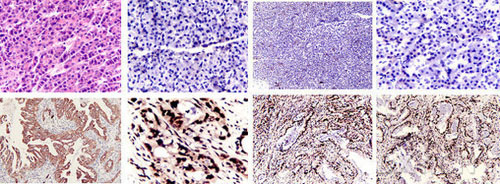
怎么做细胞爬片免疫组化染色实验
细胞爬片免疫组化染色,是通过细胞爬片是让玻片浸在细胞培养基内,细胞在玻片上生长,主要用于组织学,免疫组织化学...
2020/7/20 22:04:33
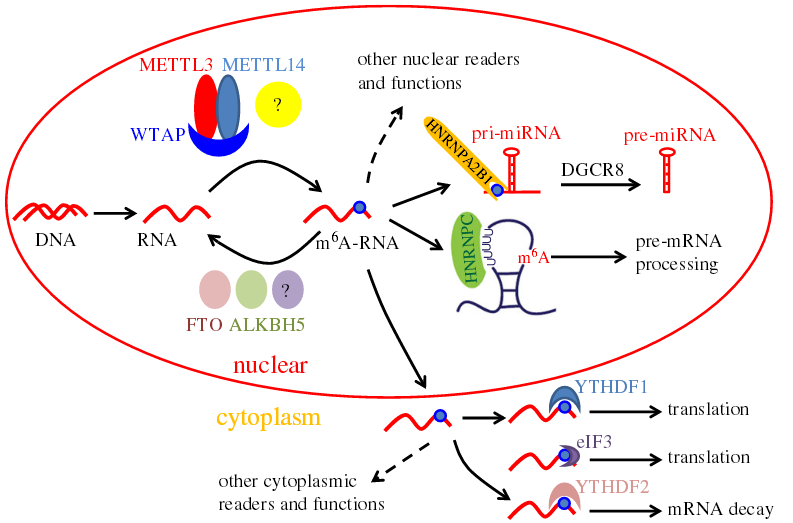
提取病毒RNA的实验方法
提取病毒RNA方法分别有:异硫氰酸胍的提取病毒RNA方法、TRIzol LS提取法、Trizol法提取法等等...
2020/7/22 20:29:26
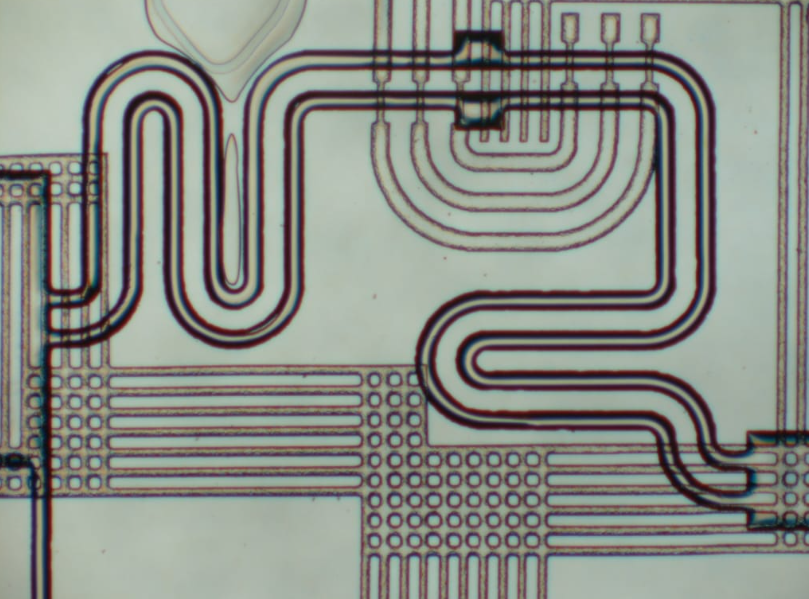
各种微流控芯片键合方法的优缺点
微流控芯片键合:目前主要有激光焊接、热压键合、胶键合、超音波焊接,每种方法都有各自的优缺点。本文主要介绍聚酯...
2023/7/28 10:43:09
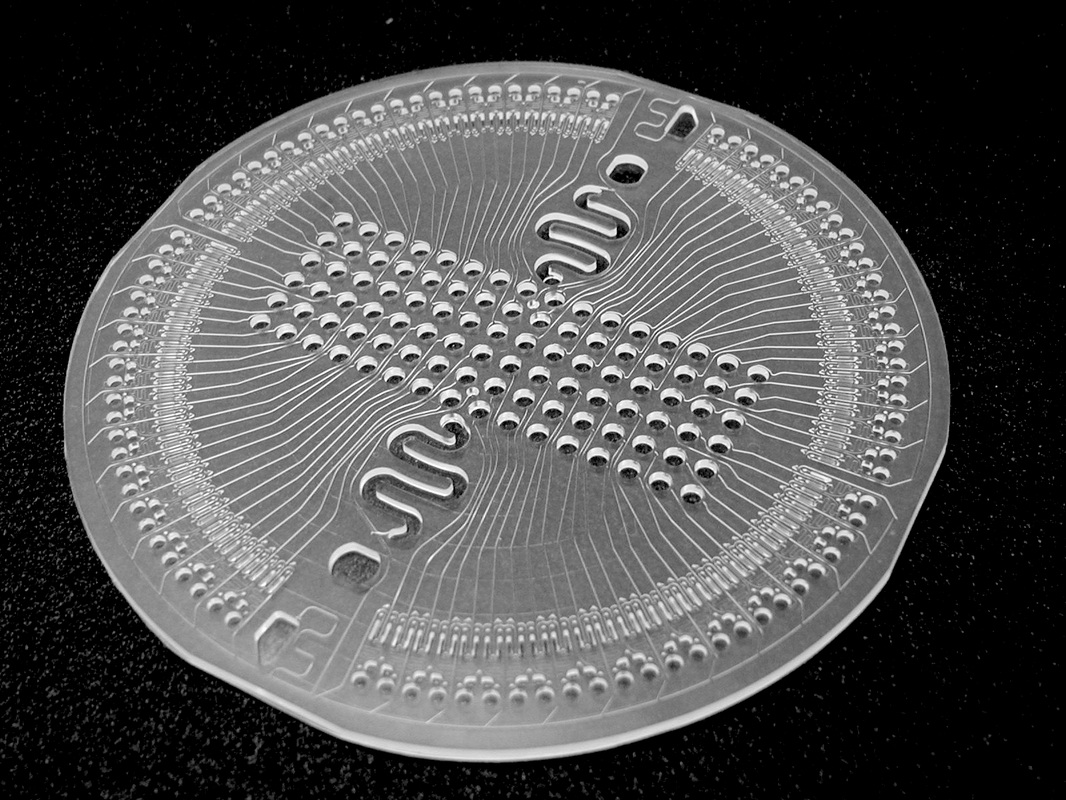
新一代微流控键合解决方案
微流控键合解决方案:微流控芯片制造的一个重要环节,也是最容易被忽视的--芯片键合。其中一个重要因素是:微流控...
2023/7/27 12:44:28
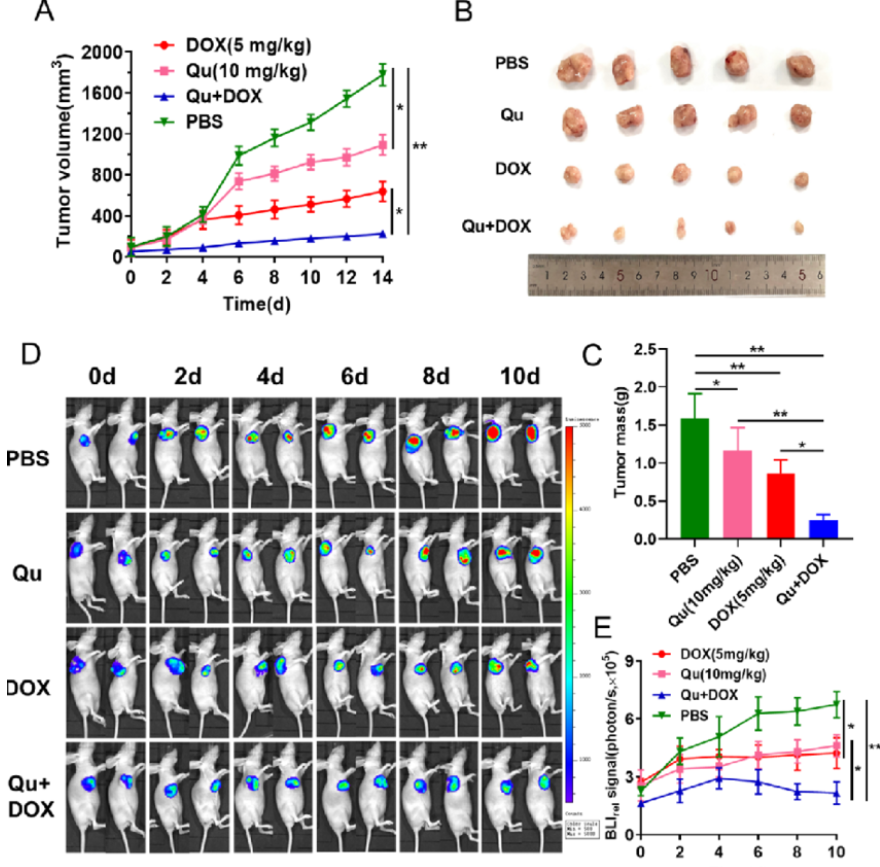
荧光素钾盐使用说明
D-荧光素钾盐(K+)设计用于体外和体内生物发光测定。D-荧光素的质量和纯度对于获得良好和可重复的结果至关重...
2023/7/20 11:05:11
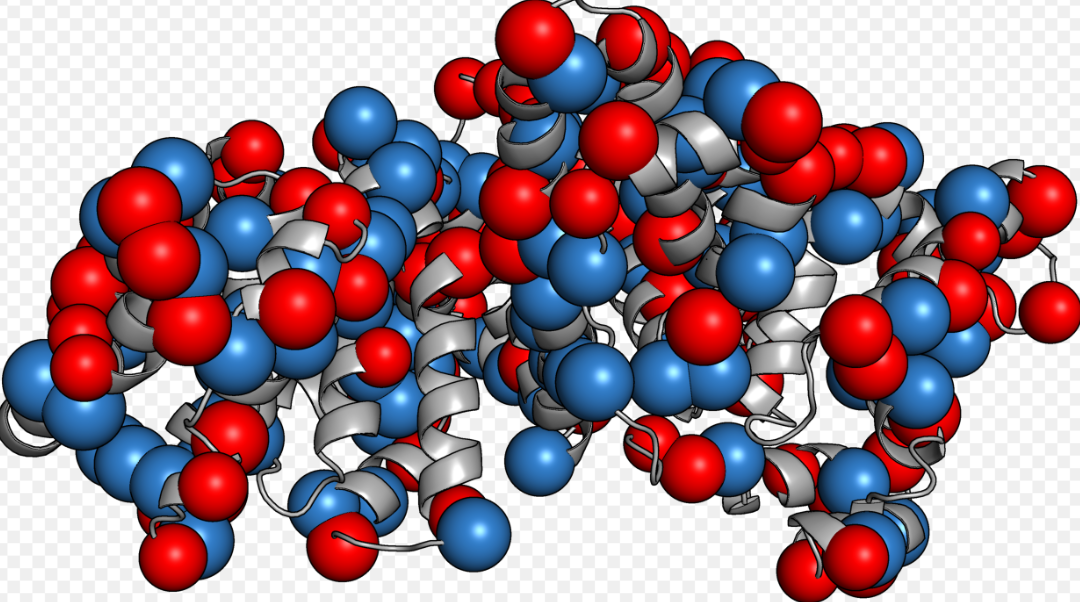
如何选BSA(牛血清白蛋白)
如何选BSA(牛血清白蛋白):牛血清白蛋白(BSA)有多种形式,如何选择适合自己的牛血清白蛋白(BSA)是一...
2023/2/14 13:09:18
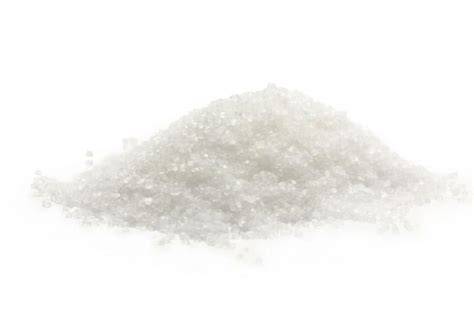
牛血清白蛋白(BSA)常见问题
牛血清白蛋白(BSA)常见问题:牛血清白蛋白(BSA)在实验室中是通用的,可用于蛋白质印迹、细胞组织培养、P...
2022/10/19 9:39:51

pubmed使用方法(技巧)
pubmed使用方法(技巧):PubMed是一个关于医学问题的学术文章和书籍的数据库。因为它是一份学术期刊,...
2022/10/18 18:06:07

BSA(牛血清白蛋白)
BSA(牛血清白蛋白):牛血清白蛋白(BSA)是一种球状蛋白质,牛血清白蛋白(BSA)是发现于牛血浆中的主要...
2022/10/18 16:48:12
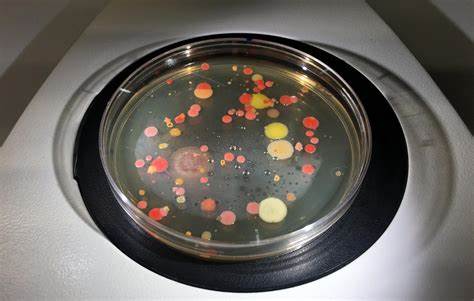
冻干培养细菌的方法
冻干培养细菌的方法:冷冻干燥,也称为冻干或冷冻干燥,是在产品冷冻后除去水分并将其置于真空中的过程。这使得冰可...
2022/10/16 8:27:31




 购物车
购物车 



